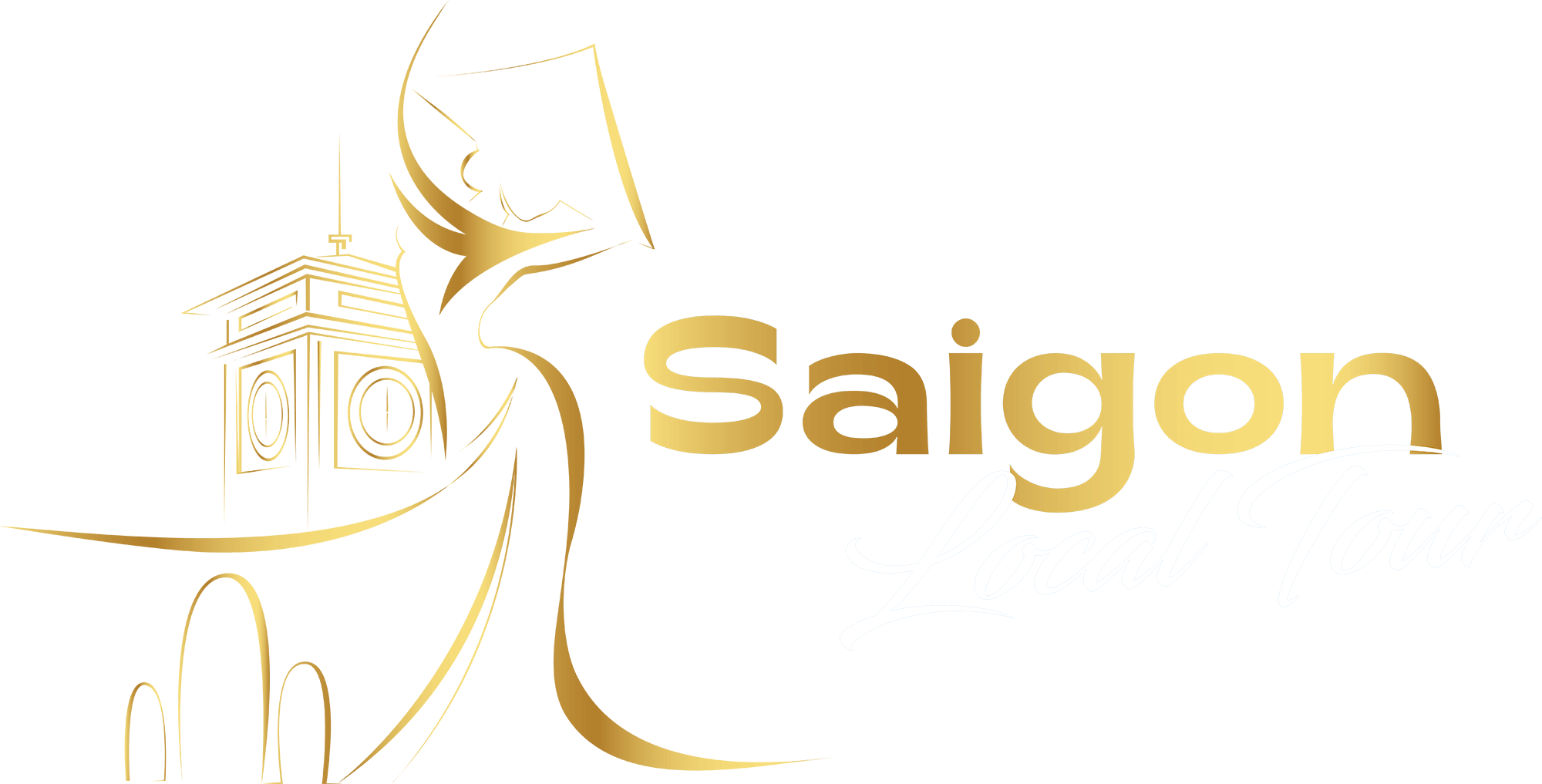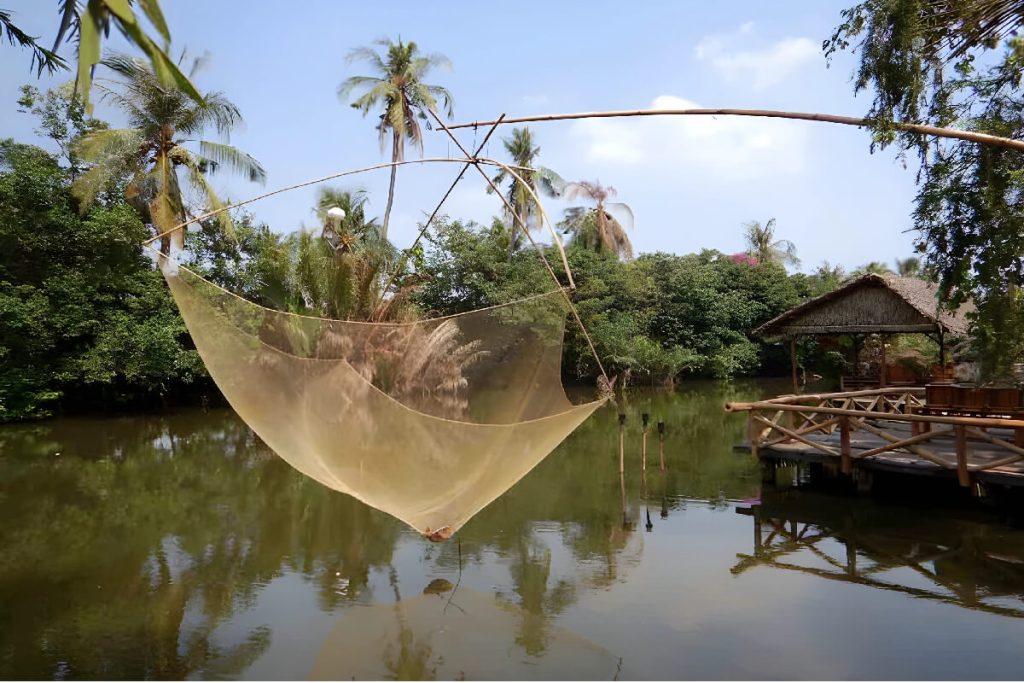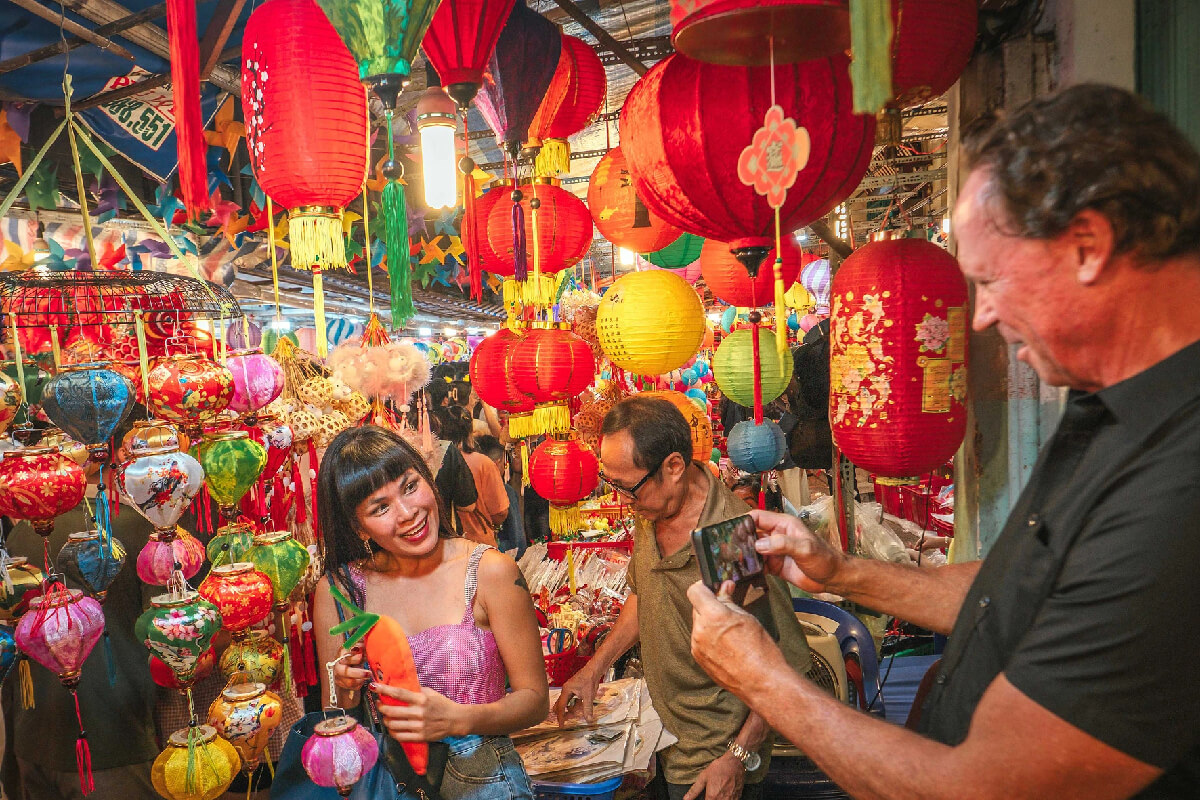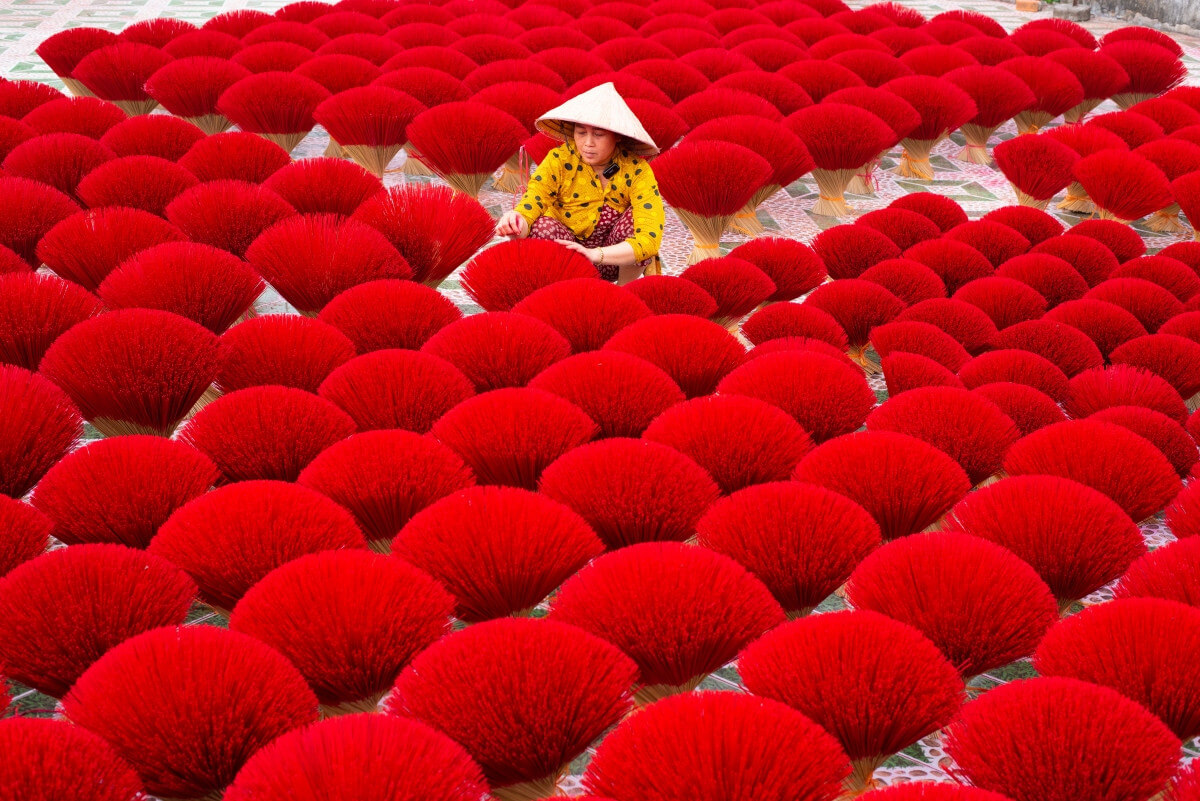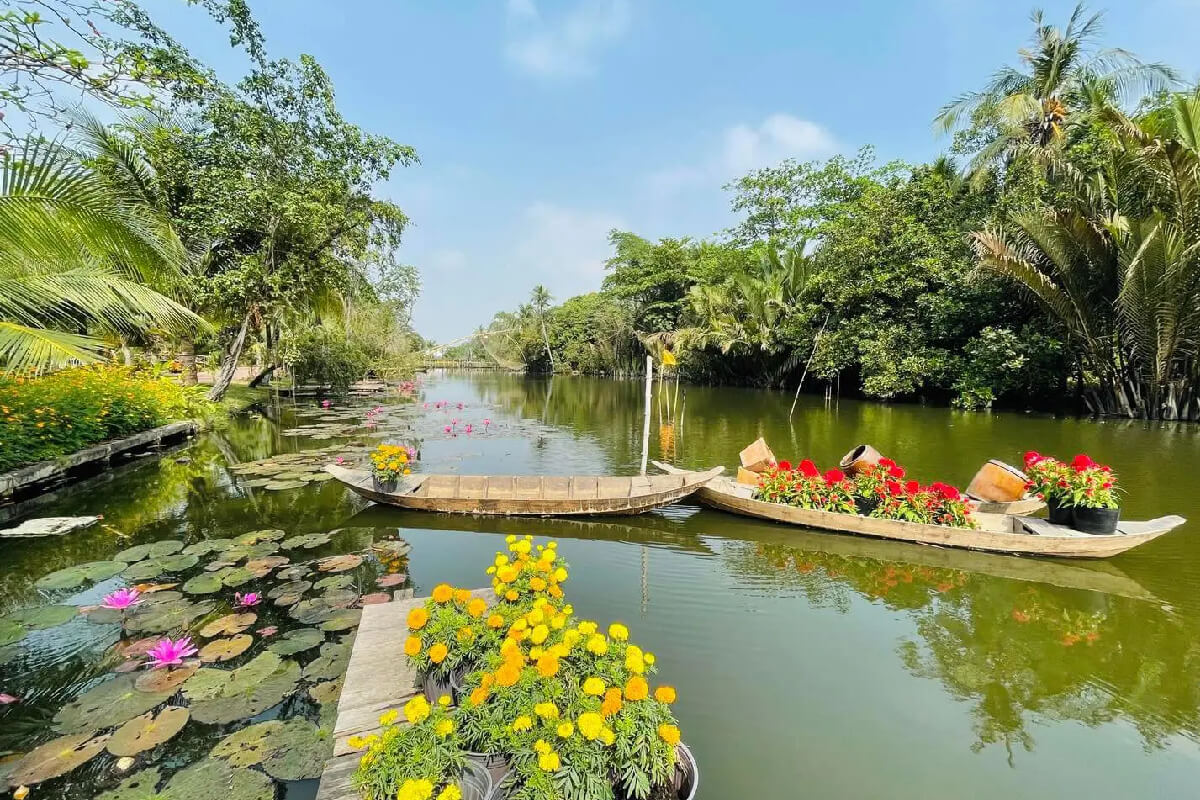Ho Chi Minh City, also known as Saigon, is not only famous for its vibrant cityscape and modern lifestyle but also for its hidden gems—traditional villages that preserve Vietnam’s cultural heritage. If you're looking to explore the authentic experience of the city, let’s dive into top 5+ Vietnamese Must-Visit Cultural Villages In Ho Chi Minh City and the unique experiences at these villages in your Saigon tours.
Why You Should Visit Traditional Villages In Saigon
Visiting traditional villages in Saigon is an extraordinary opportunity to immerse yourself in Vietnam’s rich cultural heritage. These villages act as living museums, where ancient crafts such as lantern-making, rice paper production, and weaving are still practiced daily. Each visit offers a glimpse into the work of artisans who have preserved these age-old trades for generations. By stepping into these cultural spaces, you not only witness the heart of Vietnamese traditions but also directly support local communities, contributing to the sustainability of their livelihoods.
Beyond their cultural significance, traditional villages in Saigon provide a serene escape from the city’s bustling streets. They allow visitors to relax and soak in the peaceful atmosphere while learning about Vietnam’s history and daily life. Many of these villages also offer hands-on workshops, giving you the chance to try your hand at creating rice paper, weaving mats, or crafting lanterns. These interactive experiences make your visit not only educational but deeply memorable, as you engage directly with the culture.
These villages offer a unique perspective on Vietnam’s heritage, making them a must-visit for anyone seeking to explore the roots of this dynamic country. From the vibrant crafts to the calming rural landscapes, Saigon’s traditional villages are an unmissable part of your journey.
Top 5+ Must-Visit Cultural Villages In Ho Chi Minh City
Phu Binh Lantern Village
Address: Ward 5, District 11, Ho Chi Minh City
Phu Binh Lantern Village, located in District 11 of Ho Chi Minh City, is a hidden gem renowned for its colorful lanterns. This village holds a legacy of over a century, where the craft of lantern-making has been passed down through generations. Especially vibrant during the Mid-Autumn Festival, the village comes alive with dazzling displays of handcrafted lanterns, showcasing the artisans' dedication and skill. The lanterns, made from bamboo frames and fabric, reflect not only artistry but also deep cultural traditions rooted in Vietnamese festivals and family celebrations.
When visiting Phu Binh Lantern Village, you can witness firsthand how skilled artisans meticulously craft each lantern, blending traditional techniques with creative designs. For those eager to dive deeper into the process, the village offers hands-on workshops where you can create your own lantern, guided by local craftsmen. Beyond the workshops, the village provides endless opportunities for photography enthusiasts, with vibrant, colorful lanterns displayed across homes and workshops, making it a visually enchanting experience.
Phu Binh Lantern Village is more than just a destination; it is a gateway into Vietnam’s rich festival culture. By exploring this village, you immerse yourself in a world where artistry and tradition merge beautifully. Whether you're crafting your own lantern, capturing the displays, or simply soaking in the lively yet serene atmosphere, a visit to Phu Binh Lantern Village promises a memorable cultural journey into the heart of Vietnam.
Le Minh Xuan Incense Village
Address: Le Minh Xuan Commune, Binh Chanh District, Ho Chi Minh City
Incense holds a profound significance in Vietnamese culture, deeply intertwined with spiritual practices, religious rituals, and even traditional medicine. The process of crafting incense is a meticulous art, blending natural materials with age-old techniques to produce fragrant sticks that symbolize peace and spiritual connection. Each stick carries the essence of Vietnamese traditions, creating a sense of harmony and reverence in both daily life and ceremonial occasions. Through their dedication, the artisans of Le Minh Xuan continue to safeguard the spiritual and cultural essence of the nation, ensuring that this traditional beauty endures through festivals, holidays, and religious ceremonies.
Nestled in the Le Minh Xuan commune of Binh Chanh District, the incense-making village stands as a testament to this enduring craft. For nearly a century, it has been a hub of tradition, supplying incense to much of southern Vietnam. Despite the modern development, the village still retains its distinctive charm, echoing the legacy of generations of artisans. Known as one of the region's largest centers for incense production, it preserves not only a craft but also a vital piece of Vietnamese heritage.
Visitors to Le Minh Xuan Incense Village can observe the meticulous process of crafting incense sticks, from selecting natural materials like bamboo and fragrant herbs to shaping, drying, and bundling the final products. The vibrant displays of incense sticks, arranged in colorful fan-like patterns, are a visual treat and a testament to the skill of the artisans. The village also provides opportunities to interact with local craftspeople, offering a unique perspective on their dedication to preserving this centuries-old craft.
Phu Hoa Dong Rice Paper Village
Address: Phu Hoa Dong Commune, Cu Chi District, Ho Chi Minh City
As most tourists associate Cu Chi with its iconic underground tunnels, few realize it is also home to the nearly 100-year-old Rice Paper Village, a treasure trove of Vietnamese history and culture. This traditional craft village is a hidden gem where ancient techniques are preserved, offering visitors a rare glimpse into Vietnam’s artisanal heritage. Beyond its historical significance, the Rice Paper Village embodies the heart of rural Vietnamese life, where craftsmanship and tradition converge to create a unique and authentic experience.
A visit to Cu Chi's Rice Paper Village goes beyond mere observation; it’s an immersive journey into the soul of Vietnamese culture. Here, visitors can witness the process of rice paper-making, a craft passed down through generations. From grinding rice to spreading the batter onto bamboo mats and drying it under the sun, every step reflects the dedication and artistry of the local people. The village also highlights the deep connection between culture and cuisine, as freshly made rice paper is not just a staple of Vietnamese cooking but also a symbol of resourcefulness and community.
What makes this experience even more special is the opportunity for hands-on participation. Travelers can try their hand at creating rice paper alongside skilled artisans, gaining a deeper appreciation for this intricate craft. The warm hospitality of the locals fosters cultural exchange, enriching the journey with meaningful interactions. To top it off, visitors can enjoy tasting freshly prepared rice paper dishes, offering a delicious and memorable conclusion to an enriching day. A trip to the Rice Paper Village of Cu Chi is more than just a visit—it’s an unforgettable cultural adventure that connects you to the essence of Vietnam.
Binh Quoi Village
Address: Binh Quoi Street, Ward 28, Binh Thanh District, Ho Chi Minh City
Binh Quoi Village, nestled in the Binh Thanh District of Ho Chi Minh City, is a captivating blend of culture, tradition, and natural beauty, making it a must-visit destination for those seeking an authentic Vietnamese experience. Unlike typical craft villages, Binh Quoi stands out as a comprehensive cultural and recreational hub, offering visitors a serene escape from the bustling city. Surrounded by lush greenery, tranquil riverside views, and traditional southern Vietnamese architecture, the village evokes the charm of the Mekong Delta, allowing you to immerse yourself in rural life without venturing far from Saigon’s urban center.
Visitors to Binh Quoi Village can savor the rich flavors of southern Vietnamese cuisine at its renowned buffet, featuring authentic dishes that capture the essence of the region. The village is also home to beautifully recreated rural houses, providing a glimpse into the traditional lifestyles of Vietnamese farmers. Beyond the visual appeal, the village hosts engaging cultural activities, including folk games, music performances, and seasonal festivals that celebrate the heritage of Vietnam’s southern provinces. This makes it an ideal spot for families, couples, and solo travelers alike who are looking for a meaningful cultural adventure.
Whether you’re indulging in local delicacies, exploring the tranquil settings, or participating in hands-on activities, the village provides a unique opportunity to connect with Vietnam’s rich cultural heritage. For anyone visiting Ho Chi Minh City, Binh Quoi Village offers the perfect combination of relaxation, education, and entertainment, making it one of the city’s top cultural landmarks.
Thai My Weaving Village
Address: Thai My Commune, Cu Chi District, Ho Chi Minh City
Thai My Village, located in Cu Chi District, is renowned for its traditional straw mat weaving, a craft that has been passed down through generations. For decades, this village has served as a center of craftsmanship, where skilled artisans create beautiful and functional mats using natural materials such as straw and palm leaves. The intricate process of weaving is a demonstration of the locals' deep connection to their environment and their ability to transform simple resources into everyday essentials. As you visit, you’ll have the opportunity to observe these artisans make intricate patterns weave into each mat.
One of the most unique aspects of visiting Thai My Village is the chance to engage in the crafting process yourself. Visitors can participate in hands-on workshops where local artisans will guide you through the steps of weaving your own mat. Whether you're a first-timer or an experienced crafter, this interactive experience allows you to appreciate the skill and patience required to create these traditional works of art. It's a great way to connect with the culture of the region and learn about the craft in a more personal, meaningful way.
Thai My Village is more than just a place to see traditional crafts; it’s a testament to Vietnam’s resourceful use of natural materials and sustainable practices. In a world increasingly focused on eco-conscious living, this village stands as a reminder of how traditional techniques can offer sustainable alternatives to modern, mass-produced goods. By supporting the artisans and purchasing handmade mats, visitors help preserve not only a valuable cultural heritage but also the environment. Thai My Village offers a truly authentic experience for those looking to connect with Vietnam’s rural traditions and discover the beauty of sustainable craftsmanship.
An Hoi Bronze Casting Village
Address: Nguyen Duy Cung Street, Go Vap District, Ho Chi Minh City
An Hoi Bronze Casting Village, situated in the Go Vap District of Ho Chi Minh City, is a fascinating destination for those keen on exploring Vietnam's rich artistic and industrial heritage. This village has been honing the art of bronze casting for centuries, and its artisans continue to craft a wide range of items, from intricate decorative pieces to tools. The skill and precision involved in this craft are passed down through generations, making An Hoi a living testament to Vietnam’s historical craftsmanship.
When visiting An Hoi, you'll have the unique opportunity to witness the entire bronze casting process, from melting the metal to shaping it into beautiful sculptures or practical items. The sights and sounds of molten metal being poured and molded into intricate designs are truly mesmerizing, offering a rare and authentic experience. For those looking to take home a piece of Vietnamese culture, the village offers a variety of bronze products that make for perfect souvenirs, including jewelry, statues, and home decor.
An Hoi Bronze Casting Village is an ideal destination for those passionate about Vietnam’s artistic heritage and industrial history. The village not only offers a deep dive into a centuries-old tradition but also allows visitors to interact with the artisans, learn about their techniques, and appreciate the craftsmanship that goes into each unique bronze piece.
How to Plan Your Visit to Vietnamese Traditional Villages
The Best Time to Visit
The Dry Season (November to April):
The weather in Ho Chi Minh City is generally hot and humid throughout the year, but the dry season offers more pleasant conditions for outdoor activities. From November to April, the temperatures are more moderate, with less rainfall. This makes it easier to explore the rural landscapes and outdoor attractions without worrying about sudden downpours.
Festivals:
If you want to experience Vietnamese villages at their most vibrant, plan your visit around major Vietnamese festivals such as Tet (the Lunar New Year) or the Mid-Autumn Festival. During Tet (usually in January or February), many villages have special activities, cultural performances, and the production of traditional goods like lanterns, rice cakes, and incense. The Mid-Autumn Festival (in September or October) is particularly famous for lantern displays and community gatherings, making it an exciting time to witness village life and customs in full swing.
Avoiding the Rainy Season:
From May to October, Ho Chi Minh City experiences its rainy season, which can bring heavy downpours. While the rain isn’t constant, it can disrupt outdoor activities and make travel difficult, especially to more rural areas. If you're planning to visit traditional villages during this time, be prepared with waterproof gear and check weather forecasts before you set out.
Transportation Options
Getting to the traditional villages around Ho Chi Minh City is relatively easy, but knowing your transportation options in advance will ensure a smooth journey.
Renting a motorbike is one of the best ways to explore the villages in Ho Chi Minh City.. Renting a motorbike is affordable, and you’ll find many rental shops around the city. The motorbike also gives you easy access to off-the-beaten-path villages that may not be reachable by larger vehicles.
If you prefer a deeper understanding of the cultural significance of each village, consider joining a guided tour. Many local tour operators offer day trips to popular traditional villages, where experienced guides provide in-depth knowledge about the history, crafts, and customs of the villages. Tours often include transportation, meals, and the opportunity to interact with local artisans, making it an educational and immersive experience.
For a hassle-free and convenient way to travel, use popular ride-hailing apps like Grab, Be, XanhSM. These apps are widely used in Ho Chi Minh City, and you can easily book a ride to the villages at any time. The advantage of using ride-hailing services is that they are more comfortable than motorbikes, and you won’t have to worry about navigation or parking.
If you're looking for an economical option, the bus system in Ho Chi Minh City can take you close to many villages, though it may require additional walking or local transport to reach the villages. Public buses are well-maintained and widely accessible, but routes may not always go directly to remote villages.
